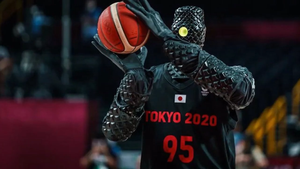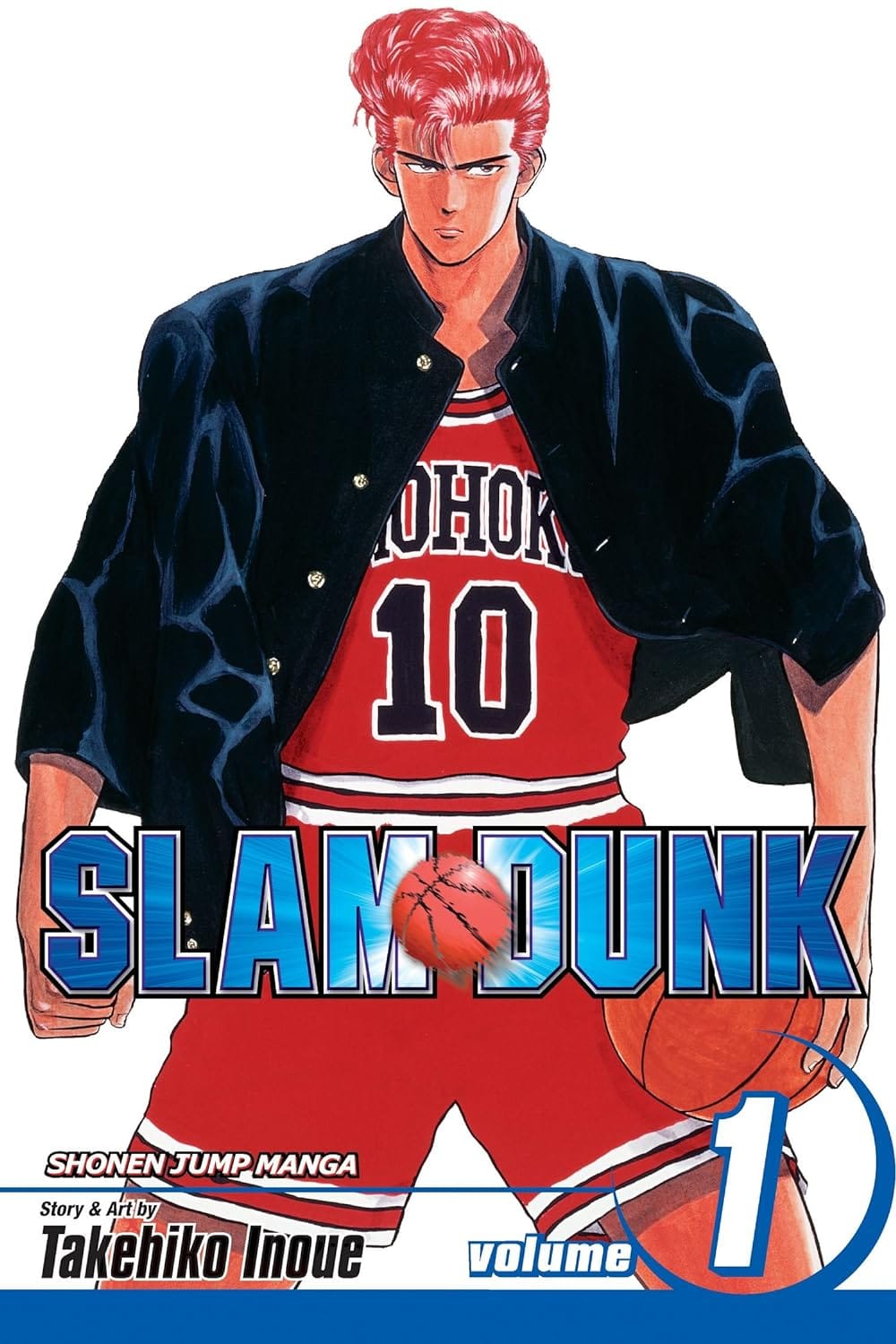In a world where artificial intelligence and robotics are intersecting with everyday life, Toyota’s CUE5 stands out as a trailblazer. This humanoid robot, developed by the Toyota Engineering Society (TES), is a marvel of modern engineering.
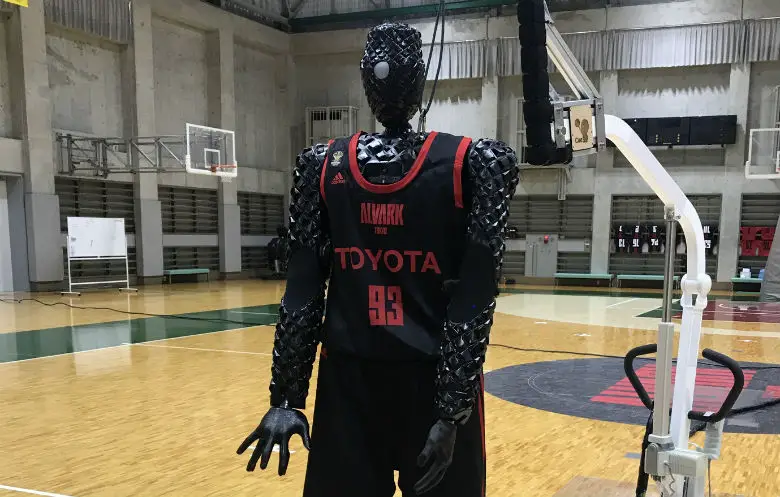
Known for its remarkable precision in basketball shooting, CUE has set a Guinness World Record for the most consecutive free throws by a humanoid robot, and now it’s dribbling its way into new territories.
From its origins as an informal project to learn AI technology, CUE has evolved into a sophisticated robot capable of performing complex basketball maneuvers
The Origin Story
The story of CUE begins with an unexpected spark of inspiration from the world of manga. In the popular basketball comic SLAM DUNK, the protagonist Hanamichi Sakuragi poses a seemingly simple question:
Will 20,000 practice shots be enough?
This question ignited the imagination of a group of engineers at Toyota, leading to the birth of the Toyota Engineering Society (TES) project that would eventually become CUE.
The Toyota Engineering Society, established in 1947, is a voluntary organization composed of approximately 30,000 Toyota employees. Its mission is to enhance the technical knowledge and skills of its members, foster teamwork, and drive technological innovation.
In 2017, the Toyota Engineering Society (TES) embarked on the ambitious project to develop a humanoid robot, CUE, capable of shooting basketballs with impeccable accuracy.
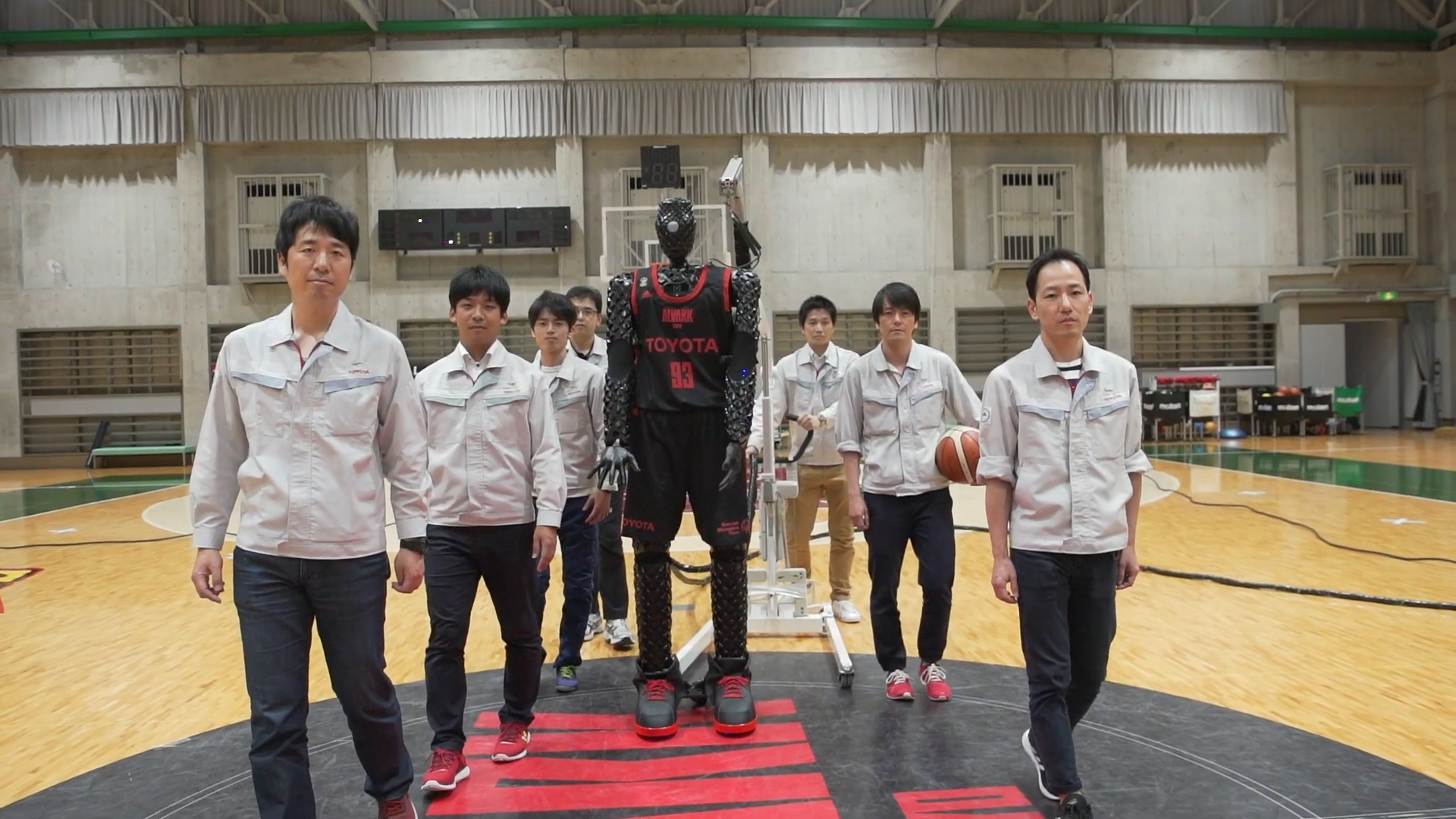
This quickly evolved into a significant endeavor aimed at pushing the boundaries of AI and robotics. The engineers envisioned CUE as a symbol of innovation, capable of calculating the perfect trajectory and force for each shot.
Through relentless experimentation and iteration, each version of CUE incorporated new advancements, bringing the team closer to achieving consistent, precise shooting accuracy.
Achieving Perfection in Free Throws
CUE's journey towards perfection began with CUE1, a basic prototype that laid the groundwork for future enhancements. Each iteration brought significant improvements, with CUE2 refining AI algorithms and mechanical precision. However, it was CUE3 that achieved a groundbreaking milestone.
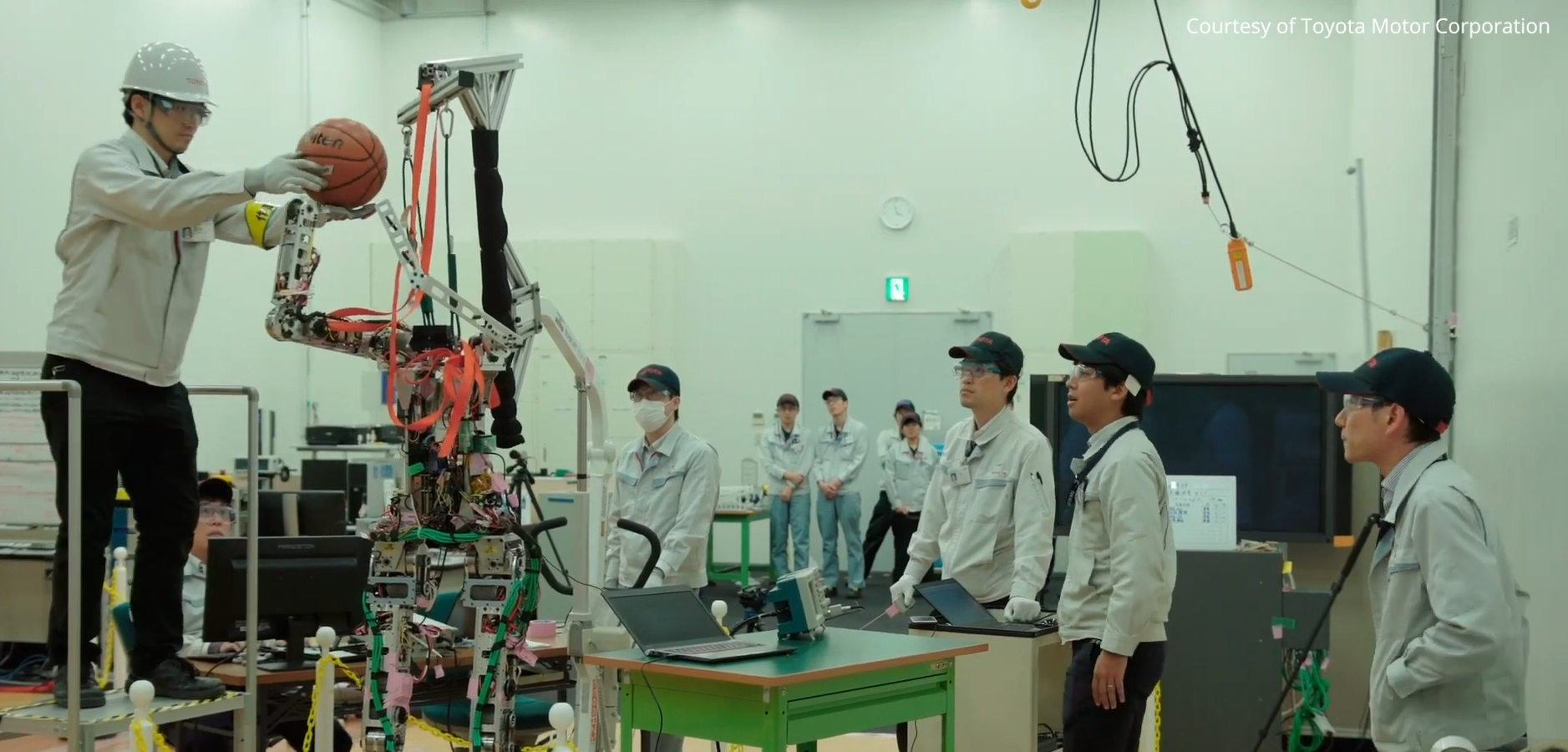
Equipped with advanced sensors and sophisticated AI, CUE3 could calculate the optimal angle and force for each shot with remarkable accuracy.
This led to CUE3 setting the Guinness World Record for the most consecutive basketball free throws by a humanoid robot, making an astonishing 2,020 consecutive shots (phew thats a-lot).
Comparing this with human records, NBA superstar Stephen Curry set a record with 80 consecutive free throws during a season in 2020. While impressive, CUE3's 2,020 consecutive shots takes the cake 🍰.
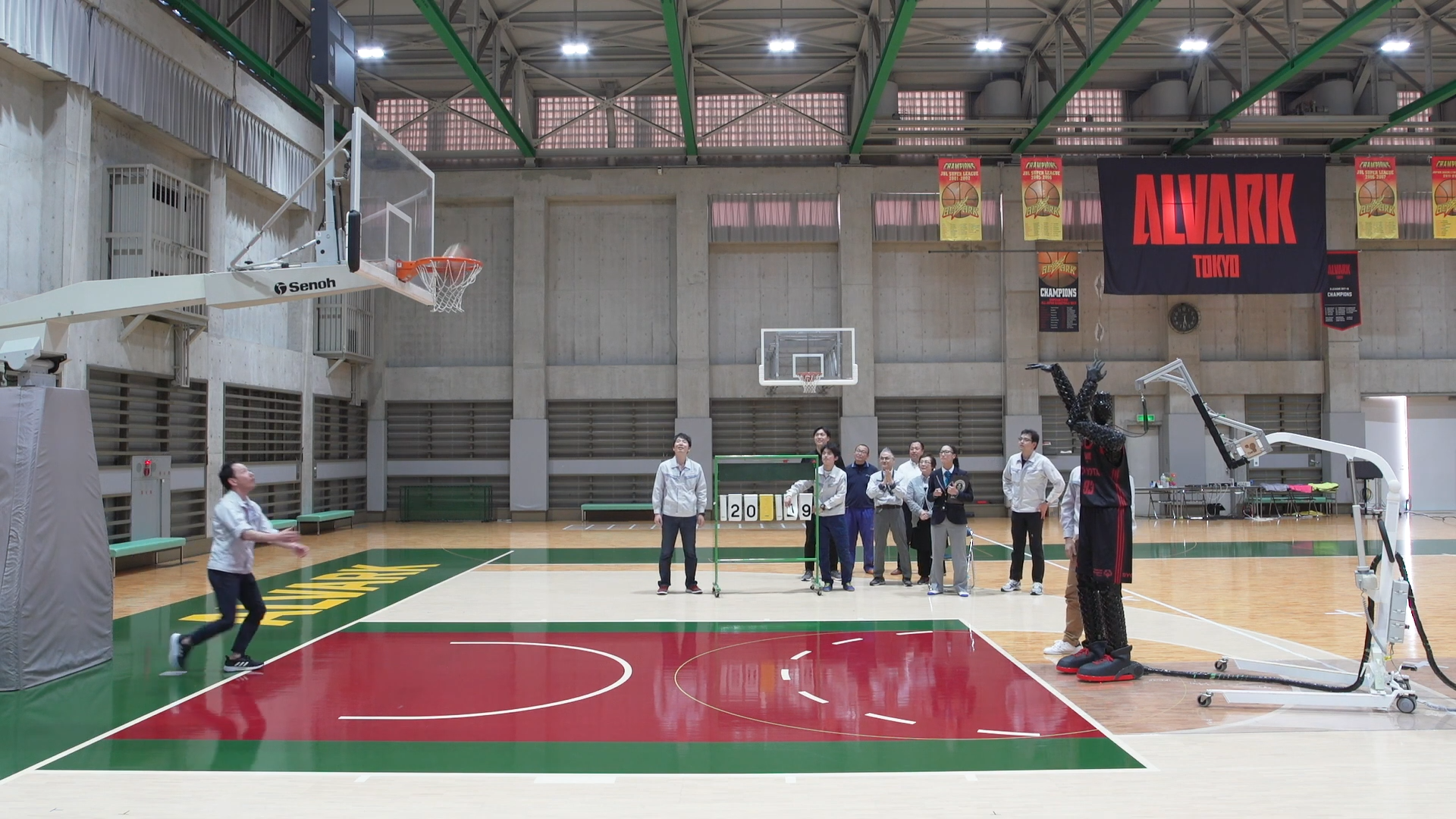
CUE3's record-setting performance showcased seamless integration of hardware and software. The evolution from CUE1 to CUE3 exemplifies the nature of technological innovation, with each version building on the successes of its predecessors.
Beyond Shooting - Enter CUE5
CUE5 introduced a new era of capabilities beyond shooting. This version featured additional movement axes, reduced power consumption, and enhanced sensing capabilities, significantly advancing its functionality.
CUE5's enhanced dribbling skills were a standout feature, demonstrated impressively at the Ibaraki Robots game and the Tokyo 2020 Olympics. These improvements enabled smoother, more human-like movements, allowing CUE5 to dribble at 7 km/h and execute complex maneuvers with precision.
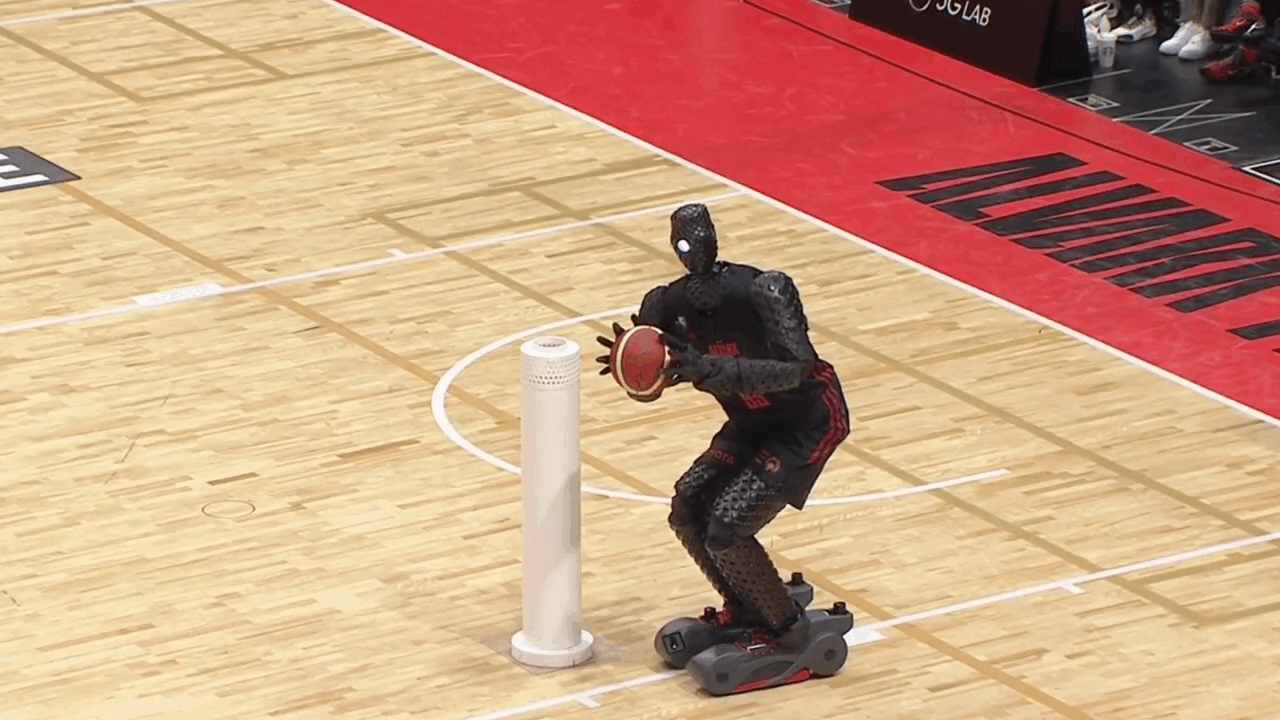
These advancements marked a significant leap from previous versions, showcasing CUE5's ability to perform dynamic basketball skills with remarkable accuracy and consistency.
The Journey from Voluntary Project to Professional Endeavor
The journey of CUE transitioned from a voluntary activity to a core professional pursuit as the project gained momentum. Initially, engineers at the Toyota Engineering Society worked on CUE in their spare time, but the project's success demanded greater dedication and resources.
The development team faced numerous challenges, from technical hurdles to balancing the project with their regular duties.
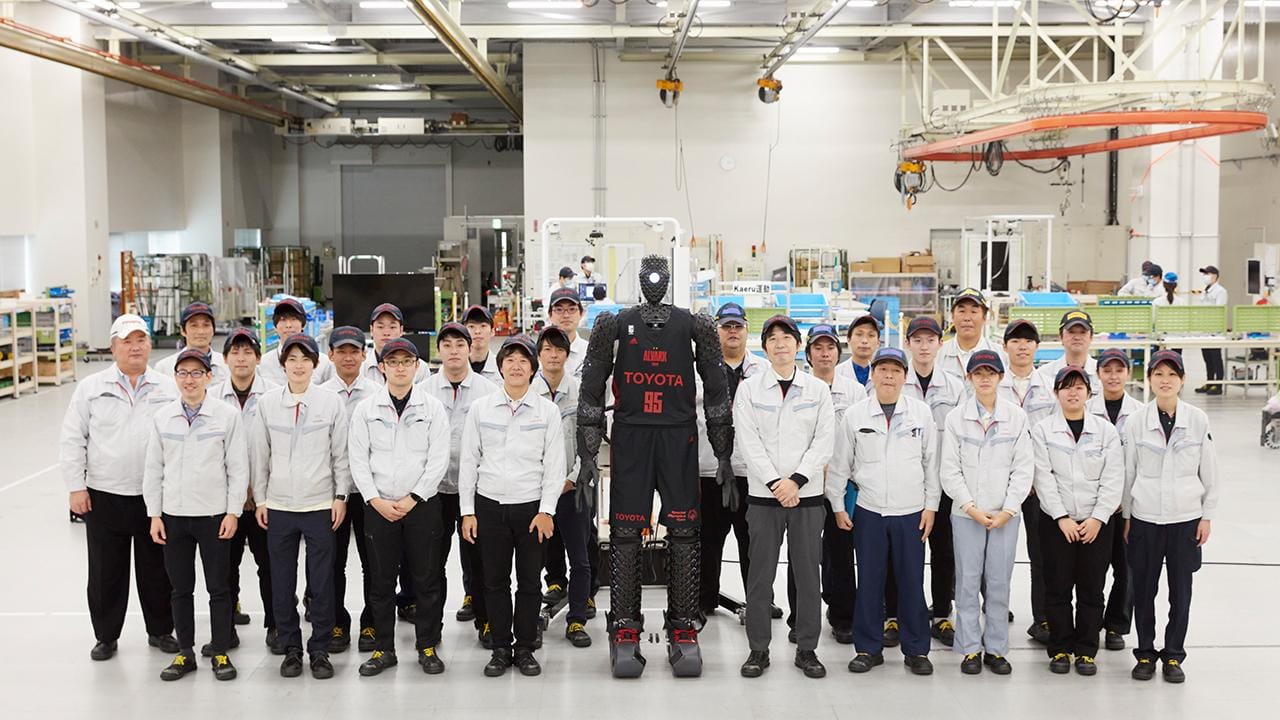
This commitment led to significant milestones: CUE3 setting a Guinness World Record for consecutive free throws, CUE's participation in the B.League All-Star Game, and CUE5's impressive performance at the Tokyo 2020 Olympics. These achievements highlighted the team's relentless pursuit of excellence in robotics.
Technical Specifications of CUE5
CUE5 represents the pinnacle of Toyota’s advancements in humanoid robotics, blending mechanical precision, sophisticated AI, and advanced sensing technologies. Below are the detailed technical specifications and features that make CUE5 a remarkable achievement.
| Specification | Details |
|---|---|
| Height | 6 feet 3 inches (190 cm) |
| Weight | 220 pounds (100 kg) |
| Power Source | Battery housed in chest |
| Movement | Small spinning tires, additional movement axes in arms |
| Sensors | Cameras in feet, advanced sensing for ball position |
| AI Capabilities | Machine learning for shooting and dribbling accuracy |
| Dribbling Speed | 7 km/h |
| Shooting Range | Free throws, three-pointers, midcourt shots |
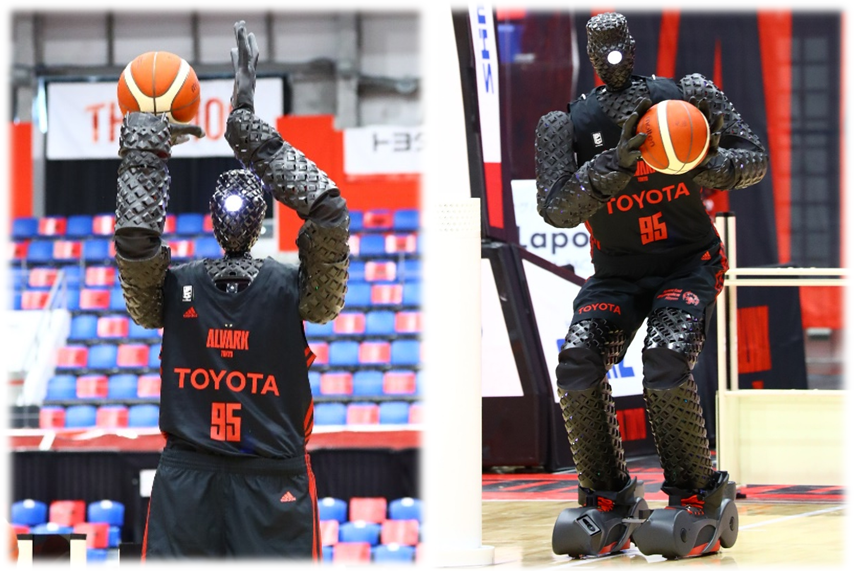
In Depth Specifics on CUE 5 :
Height and Build
Standing at 6 feet 3 inches and weighing 220 pounds, CUE5 mirrors the stature of a professional basketball player. Its robust structure, crafted from lightweight, durable materials, ensures stability and mobility, allowing for smooth, human-like movements.
Power Source
CUE5 is powered by a high-capacity lithium-ion battery housed in its chest. This battery provides the robot with extended operational time and consistent power output, ensuring it can perform intensive tasks without frequent recharges.
Mobility and Mechanics
CUE5 features small spinning tires and additional movement axes in its arms, which grant it exceptional mobility. The high-precision electric actuators in its joints enable smooth and responsive movements, essential for replicating the complex motions of dribbling and shooting. Capable of dribbling at speeds up to 7 km/h, CUE5 adjusts its movements in real-time, showcasing remarkable agility and control.
Sensors and Sensing Capabilities
Equipped with multiple cameras embedded in its feet and torso, CUE5 has a 360-degree view of its environment. These cameras enhance its ability to track the ball and navigate the court. Additionally, LIDAR and infrared sensors measure distances and detect obstacles, ensuring accurate navigation. Advanced sensors resembling thermographic imaging detect the ball’s position and environmental conditions, allowing CUE5 to adjust its grip and movements dynamically.
AI and Machine Learning
CUE5 employs advanced AI algorithms and deep learning techniques to process visual and spatial data. Convolutional neural networks (CNNs) enable it to recognize and track the basketball and hoop in real-time. Reinforcement learning allows CUE5 to improve its dribbling and shooting skills through trial and error, adapting its strategies based on performance feedback. These AI capabilities enable CUE5 to calculate the optimal force and angle for each shot with remarkable precision, ensuring high accuracy in its performance.
Control Systems
At the heart of CUE5’s operations is a high-performance CPU(central processing unit) integrated with a dedicated GPU(Graphics processing unit), which allows for rapid computation and real-time AI processing. Custom control algorithms ensure seamless coordination between the robot’s mechanical components and AI systems, providing fluid and natural movements.
Software Integration
CUE5 is built on the Robotic Operating System (ROS) framework, allowing for modular and scalable software development. This enables seamless integration of new features and continuous improvement. The machine learning models, trained on vast datasets of basketball games and player movements, empower CUE5 to predict and react to dynamic in-game scenarios with human-like dexterity.
The combination of these advanced technical specifications and cutting-edge AI technologies enables CUE5 to perform basketball tasks with precision and consistency, pushing the boundaries of what humanoid robots can achieve in sports.
Insights from the Development Team
Project leader Tomohiro Nomi encapsulates the spirit of the team with his belief in the impossible:
No one thought an accurate three-point shot was possible until we did it. There’s no such thing as impossible.” - Tomohiro Nomi
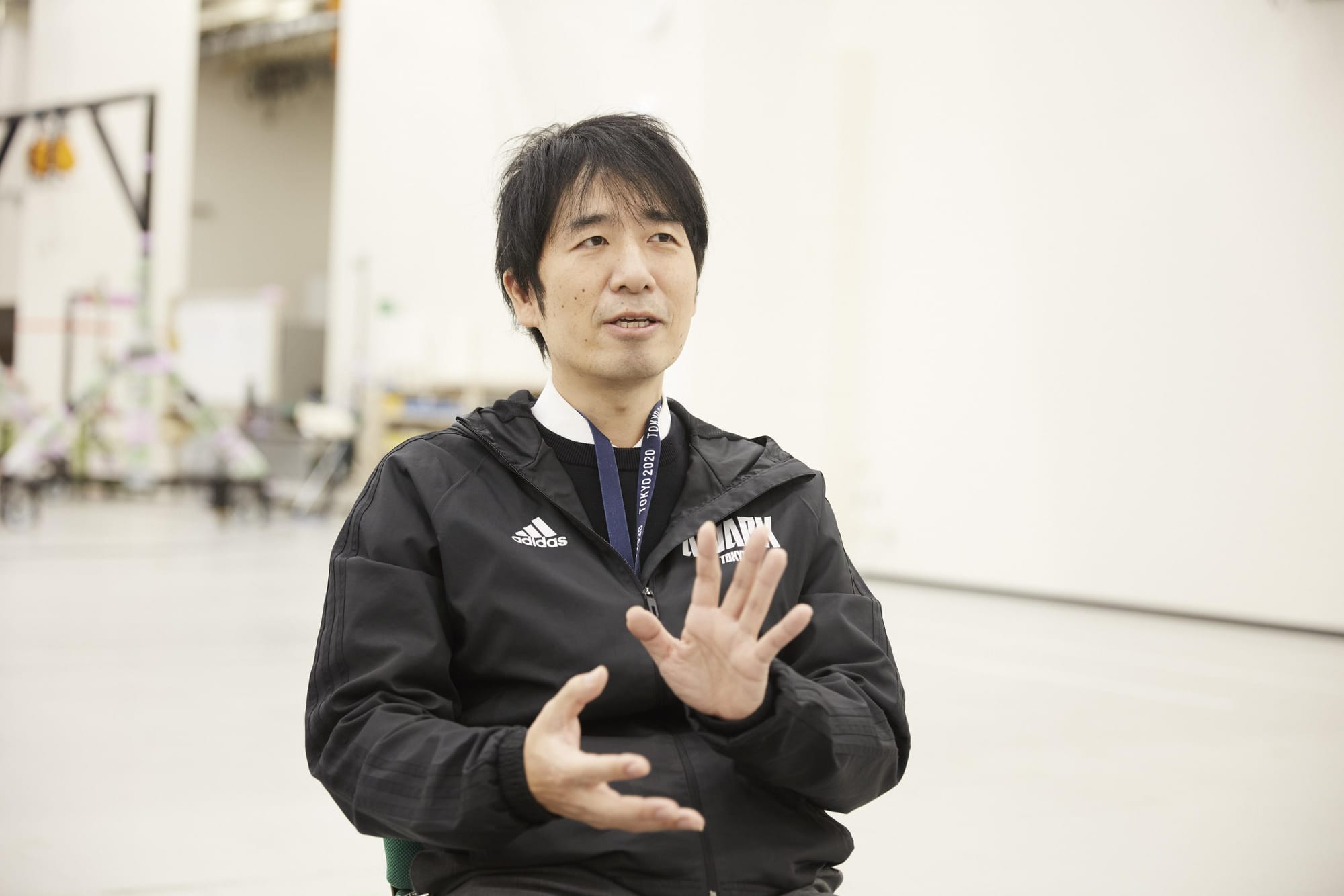
This quote reflects the team's determination to push the boundaries of what AI and robotics can achieve.
Nomi’s leadership has been pivotal in steering the project through its various phases, from initial conceptualization to achieving record-breaking feats.
Giving Back to the Basketball Community
From its inception, the CUE project aimed to push technological boundaries while giving back to the basketball community. The collaboration with the Alvark Tokyo team and support from the broader basketball community have been pivotal.
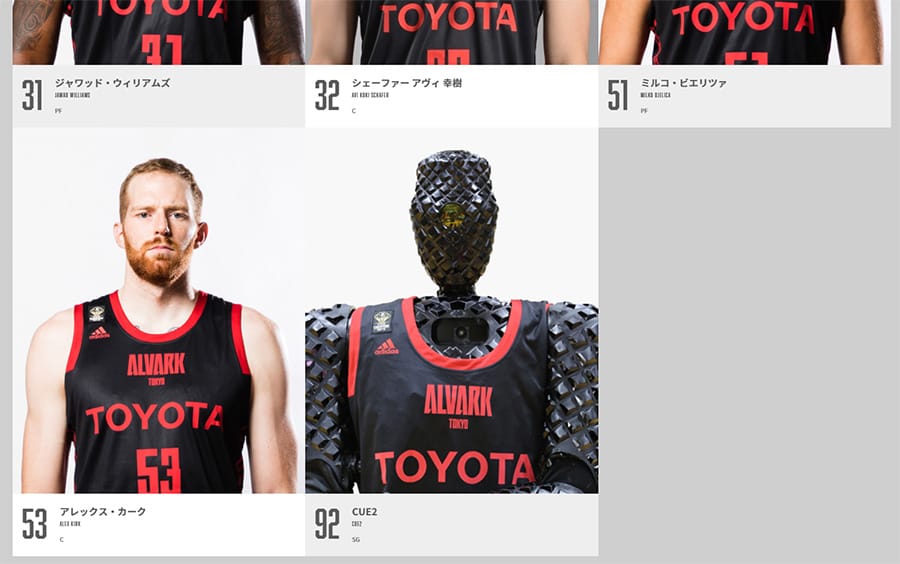
CUE's journey has not only showcased advanced robotics but also contributed to the sport, creating mutual benefits for both technology and basketball enthusiasts.
CUE's Achievements:
| Event | Achievement | Date |
|---|---|---|
| Guinness World Record | 2,020 consecutive free throws (assisted) | 2019 |
| B.League All-Star Game | Participation in shooting contests | 2020 |
| Tokyo 2020 Olympics | Pre-game and halftime exhibition performances | 2021 |
| Ibaraki Robots Game | Demonstration of dribbling skills | December 18, 2021 |
| Future Goal | Zigzag dribbling for B.League Skills Challenge | Upcoming |
These milestones highlight CUE's impact on both robotics and basketball, underscoring the project's success in fostering innovation and community engagement.
Looking ahead, the future prospects for CUE and similar AI-driven robots are incredibly promising. Continued innovations in AI and robotics will likely lead to even more sophisticated humanoid robots capable of performing complex tasks with human-like dexterity.
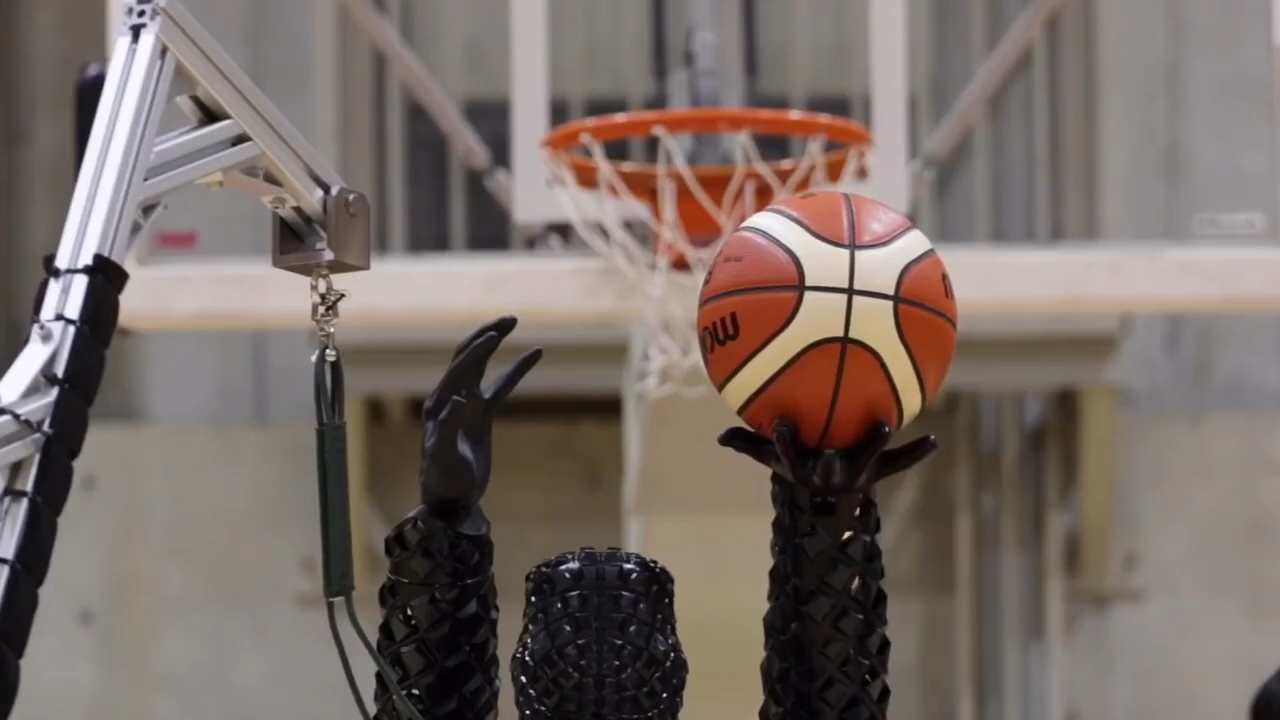
CUE's story is a slam dunk for human ingenuity and a three-pointer for the future. As it continues to evolve, its influence on sports and technology is sure to travel farther than any robot behind the arc. So stay tuned because this game's just getting started!
I hope you found this article insightful. Before you leave,
please consider supporting The bLife Movement as we cover all robotic content and write for everyone to enjoy. Not just for machines and geeks.
Unlike many media outlets owned by billionaires, we are independent and prioritize public interest over profit. We aim for fairness and simplicity with a pinch of humor where it fits.
Our global journalism, free from paywalls, is made possible by readers like you.
If possible, please support us with a one-time donation from $1, or better yet, with a monthly contribution.
Every bit helps us stay independent and accessible to all. Thank you.
Mario & Victoria


